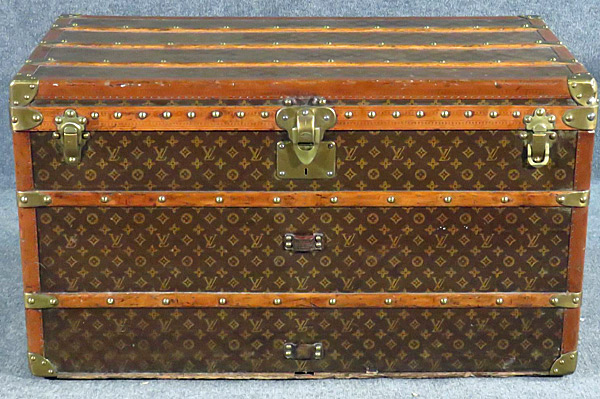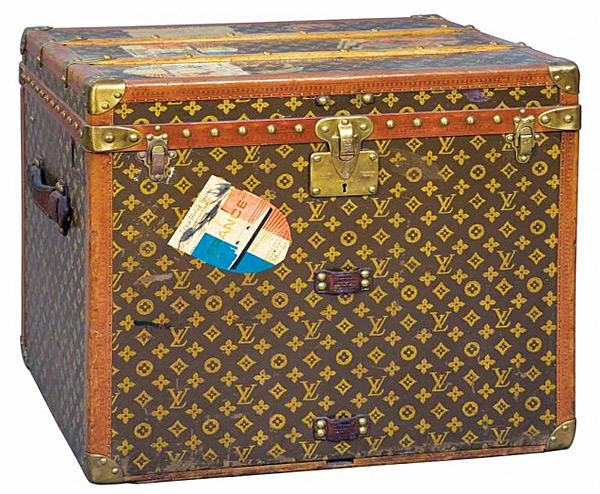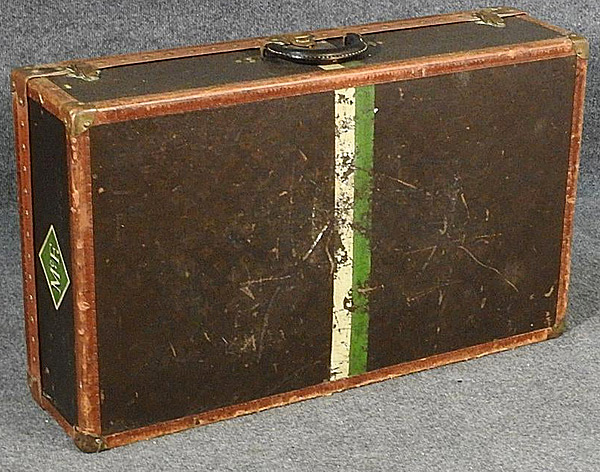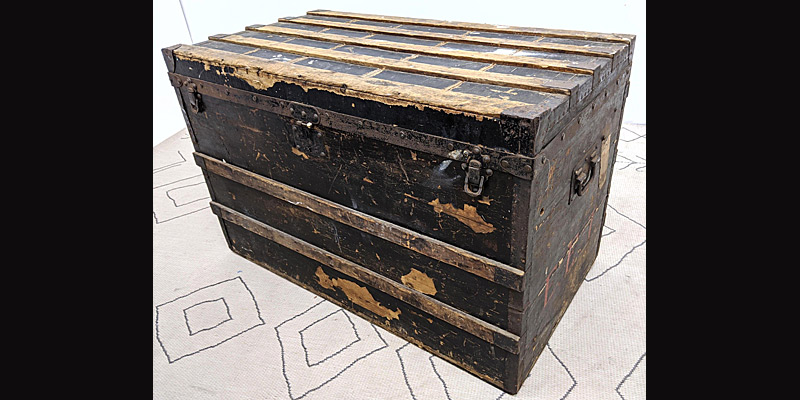The trunk was an eyesore. It was big and ugly with patches of its black cover missing, revealing the wood underneath. The wooden slats were dirty, and the metal hinges were rusty.
The interior was even worse. The paper lining was stained with dark streaks and blotches, and was torn and filthy. Why on earth was it in an auction?
Then in the corner was a label, in much better condition than the trunk itself:
Paris. 1 Rue Scribe
LOUIS VUITTON
149 New Bond Street W
London
123748
That was its secret. It was an antique Louis Vuitton steamer trunk that had seen much better years. But who cares when it’s a Louis Vuitton?

The trunk sold for $450 recently in an online auction at one of the places I can no longer visit. There were 11 bids on it, indicating that perhaps a few somebodies wanted that trunk (there’s no way to determine how many people were actually bidding). Then I came across the sale of a much nicer trunk and suitcases at another of the auction houses I used to visit. Seeing all of this made me wonder if folks were ditching their Louis Vuittons or family members were getting rid of some that had belonged to relatives.
Regardless of their condition, authentic Louis Vuitton trunks, suitcases, bags and other gear are readily snatched up. The second group I found at auction already had high bids several days before the auction even started.
Because of its cache, Louis Vuitton products are said to be among the most copied products in the industry. Who hasn’t passed a vendor on the streets of New York or other cities and seen – perhaps not the trunks or suitcases – cheap knockoff LV bags. Some of the fakes are so poorly manufactured that they are easy to spot.

The real Louis Vuittons, though, are a thing of beauty and status to those who can afford them and those who can’t. They are symbols of wealth and class, a way to show that you have arrived and want everyone to know it. Everybody who’s anybody tends to carry them.
A few years ago, items from the estate of singer and actress Lena Horne were sold at an auction house in New York. A small Louis Vuitton trunk was among her possessions for sale. Stickers on the trunk bore the name “Lena Horne Hayton,” and it sold for $20,000. Obviously, the provenance of the trunk – that it had belonged to Lena Horne – boosted the price even more. Hayton was Horne’s married name. She wedded musical director Lennie Hayton in 1947; the couple separated in the 1960s but never divorced.
The Louis Vuitton label itself came from humble beginnings, started by a teenager who traveled by foot from his home in the little town of Anchay, France, to Paris where he learned the trade of trunk-making. After several years as an apprentice, he opened his own workshop in 1854.
Louis Vuitton began working at a time when people started to travel more, lugging heavy dome-topped steamer trunks aboard ships and trains. Vuitton had a better idea: He designed a flat-top trunk clothed in waterproof canvas that was lighter. Inside were shelves and compartments, along with bands across the top to hold items securely.

Along the way, the company created new and distinctive designs for the trunks. Vuitton’s son, George, created the trademark floral pattern with the interlocked LV monogram in 1896 as a way to make their products counterfeit-proof. Each authentic Louis Vuitton trunk carried an interior label that dated the trunk and its origin.
The company’s merchandise is so expensive, according to one article, because it uses the highest quality of materials and does not mass produce its products.
Determining the value of an antique Louis Vuitton trunk can be quite easy. This site offers some things to look for. You can buy a new one on the Louis Vuitton website for the price of a high-end luxury car – check out this wardrobe reminiscent of an 1870s trunk for $93,000 – or get lucky at an auction.

